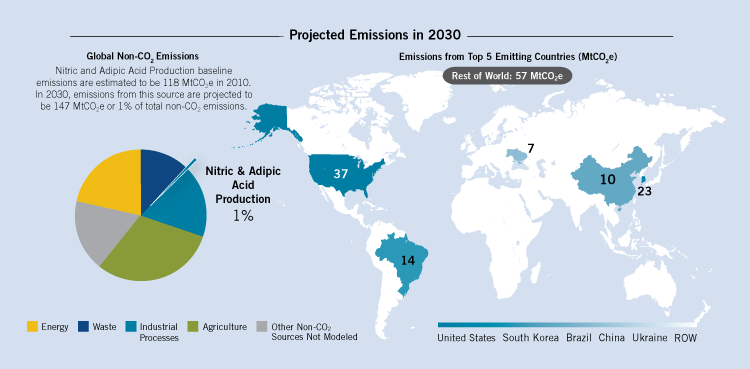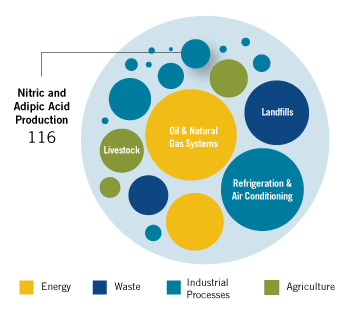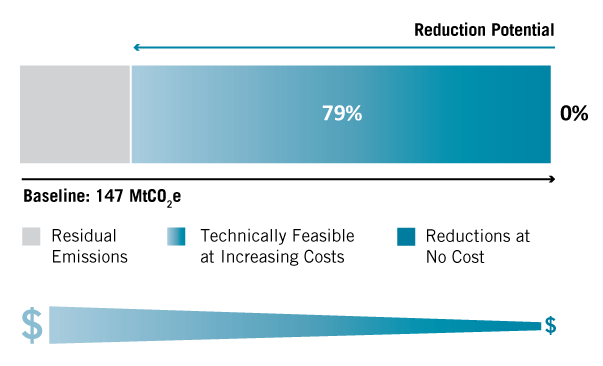Global Mitigation of Non-CO2 Greenhouse Gases: Nitric and Adipic Acid Production
Key Points
- The global abatement potential is 116 million metric tons of carbon dioxide equivalent (MtCO2e), or 79% of projected emissions in 2030.
- A 65% reduction in emissions is achievable at break-even prices below $20.
- Abatement measure selection is driven by facility design constraints and/or operating costs.
Sector Description
Nitric and adipic acid are commonly used as feedstock in manufacturing a variety of commercial products, particularly fertilizer and synthetic fibers. The process used to produce nitric and adipic acid generates significant quantities of nitrous oxide (N2O) as a byproduct. The production of nitric and adipic acid is expected to increase over time, driven by continued growth in demand for fertilizer and synthetic fibers.
 View or download the full size image here.(126 K, PNG)
View or download the full size image here.(126 K, PNG)
Emissions Reduction Potential
Assuming full implementation of current technology, emissions in the nitric and adipic acid production sector could be reduced by up to 116 MtCO2e in 2030. This accounts for 3% of the 4,615 MtCO2e in global reduction potential in 2030.
 View or download the full size image here.(103 K, PNG)
View or download the full size image here.(103 K, PNG)
Abatement Potential
The global abatement potential in the nitric and adipic acid sector is approximately 116 MtCO2e of total annual emissions in 2030, or 79% of projected baseline emissions. The marginal abatement cost curve results show that maximum reduction potential is achievable at break-even prices below $50/tCO2e. Over two-thirds of the abatement potential is achievable at break-even prices between $0 and $20.
 It would be cost-effective to reduce emissions by 0%, compared to the baseline, in 2030. An additional 79% reduction is available using technologies with increasingly higher costs.
It would be cost-effective to reduce emissions by 0%, compared to the baseline, in 2030. An additional 79% reduction is available using technologies with increasingly higher costs.
View or download the full size image here.(36 K, PNG)
Abatement Measures
N2O emissions can be mitigated through a number of alternative abatement measures. In nitric acid production, reduction technologies are categorized by their location in the production process. Secondary reduction technologies, such as homogeneous thermal decomposition and catalytic decomposition, are installed at an intermediate point in the production process. Tertiary reduction technologies, such as catalytic decomposition and nonselective catalytic reduction units, are applied to the tail-gas streams at the end of the production process. The implementation of one technology over another is driven largely by facility design constraints and/or cost considerations. Thermal destruction is the single abatement measure considered in this analysis.
 Emissions reductions by technology in 2030 at $0/tCO2e and at higher prices.
Emissions reductions by technology in 2030 at $0/tCO2e and at higher prices.
View or download the full size image here.(39 K, PNG)
